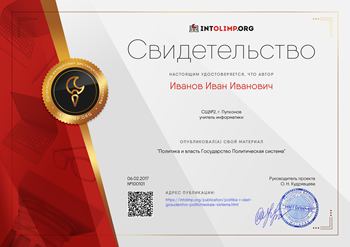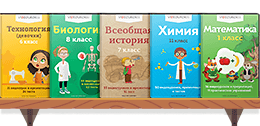Electricity
Цель: Формирование у обучающихся самостоятельно работать с текстом, отработка навыков перевода профессиональных текстов.
Содержание занятий:
Работа со справочной литературой
Чтение и перевод специального текста
Выполнение заданий по тексту
1.Прочитайте тексты и выполните задания к ним.
THE NATURE OF ELECTRICITY
Practical electricity is produced by small atomic particles known as electrons. It is the movement of these particles which produce the effects of heat and light.
The pressure that forces these atomic particles to move, the effects they encounter opposition and how these forces are controlled are some of the principles of electricity.
Accepted atomic theory states that all matter is electrical in structure. Any object is largely composed of a combination of positive and negative particles of electricity. Electric current will pass through a wire, a body, or along a stream of water. It can be established in some substances more readily than in others, that all matter is composed of electric particles despite some basic differences in materials. The science of electricity then must begin with a study of the structure of matter.
Matter is defined as any substance which has mass (or weight) and occupies space. This definition should be broad enough to cover all physical objects in the universe. Wood, water, iron, and paper are some examples of matter. Energy is closely related to, but not to be confused with, matter. Energy does not have mass, and it does not occupy space. Heat and light are examples of energy.
The smallest particle of matter which can be recognized as an original substance was thought to be a unit called the atom. Recently scientists have found particles even smaller than atoms, but our theories are still based on the atom. The atom consists of a nucleus and a cloud of electrons. It is generally agreed that the electrons are small particles of electricity, which are negative in nature. These particles orbit the nucleus in much the same fashion that planets orbit a sun.
II. Give the English equivalents for the words below:
1) производить; 2) частица; 3) тепло и свет; 4) напряжение; 5) сила; 6) вещество; 7) положительный; 8) отрицательный; 9) электрический ток;
10) вес; 11) ядро
III. Translate into Russian the words and expressions from the text:
1) atomic particle; 2) effects of heat and light; 3) encounter opposition; 4) principles of electricity; 5) composed (of); 6) pass through a wire; 7) structure of matter; 8) occupy space; 9) physical objects; 10) a cloud of electrons;
11) in the same fashion.
IV. Complete the sentences using the text:
1. Electricity is produced by …
2. The effects of heat and light are produced by …
3. According to the accepted atomic theory all matter is …
4. Any object is composed of …
5. Matter is defined as …
6. Energy must not be confused with …
7. The atom consists of …
8. The smallest particle of matter is …
9. Most theories are based on …
10. Electrons are …
V. Answer the questions:
1) What are the principles of electricity? 2) What must the science of electricity begin with? 3) Are there any differences between energy and matter?
What are they? 4) What is recognized as an original substance now?
VI. Topics for discussion:
1. The nature of electricity;
2. The nature of matter;
3. Contents of atomic theory.
Electric Circuits
The concepts of electric charge and potential are very important in the study of electric currents. When an extended conductor has different potentials at its ends, the free electrons of the conductor itself are caused to drift from one end to the other. The potential difference must be maintained by some electric source such as electrostatic generator or a battery or a direct current generator. The wire and the electric source together form an electric circuit, the electrons are drifting around it as long as the conducting path is maintained.
There are various kinds of electric circuits such as: open circuits, closed circuits, series circuits, parallel circuits and short circuits.
To understand the difference between the following circuit connections is not difficult at all. If the circuit is broken or «opened» anywhere, the current is known to stop everywhere. The circuit is broken when an electric device is switched off. The path along which the electrons travel must be complete otherwise no electric power can be supplied from the source to the load. Thus the circuit is “closed” when an electric device is switched on.
When electrical devices are connected so that the current flows from one device to another, they are said «to be connected in series». Under such conditions the current flow is the same in all parts of the circuit as there is only a single path along which it may flow. The electrical bell circuit is considered to be a typical example of a series circuit. The “parallel” circuit provides two or more paths for the passage of current. The circuit is divided in such a way that part of the current flows through one path and part through another. The lamps in the houses are generally connected in parallel.
The “short” circuit is produced when the current can return to the source of supply without control. The short circuits often result from cable fault or wire fault. Under certain conditions the short circuit may cause fire because the current flows where it was not supposed to flow. If the current flow is too great a fuse is used as a safety device to stop the current flow.
II. Guess the meaning of the following international words:
concept, potential, electrostatic generator, aluminum, parallel, typical, control.
III. Give the English equivalents for the following words and word combinations:
1) электрические цепи, 2) электрический заряд, 3) проводник, 4) сопротивление, 5) движение электронов, 6) изолятор, 7) короткое замыкание, 8) энергия.
IV. Say whether these sentences are true or false:
1. When an extended conductor has the same potential at its ends, free electrons are drifting from one end to another.
2. The wire and the electric source together form an electric circuit.
3. A path of any material will allow current to exist.
4. Silver, copper and gold oppose very strongly.
5. The slighter the opposition is, the better the insulator is.
6. There is only one type of electric circuit.
7. We close the circuit when we switch on our electric device.
V. Complete the sentences using the text:
1. The potential difference must be maintained by …
2. Materials that offer slight opposition are called …
3. The best insulators are …
4. There are various kinds of electric circuits such as …
5. We “open” the circuit when …
6. We “close” the circuit when …
7. The “short” circuit is produced when …
8. A fuse is …
VI. Answer the questions:
1. What concepts are very important in study of electric current?
2. What forms an electric circuit?
3. What materials are the best conductors and insulators?
4. What kinds of electric circuits do you know?
5. How can we open and close the circuit?
6. When are electrical devices connected in series?
7. What is an example of a series circuit?
8. What can you say about «parallel» circuits?
9. What does the short circuit often result from?
ELECTRIC CURRENT
The electric current is a quantity of electrons flowing in a circuit per second of time. The unit of measure for current is ampere. If one coulomb passes a point in a circuit per second then the current strength is 1 ampere. The symbol for current is I.
The current which flows along wires consists of moving electrons. The electrons move along the circuit because the e .m. f. drives them. The current is directly proportional to the e. m. f. In addition to traveling through solids, however, the electric current can flow through liquids as well and even through gases. In both cases it produces some most important effects to meet industrial requirements. Some liquids, such as melted metals for example, conduct current without any change to themselves. Others, called electrolytes, are found to change greatly when the current passes through them. When the electrons flow in one direction only, the current is known to be d. c., that is, direct current. The simplest source of power for the direct current is a battery, for a battery pushes the electrons in the same direction all the time (i.e., from the negatively charged terminal to the positively charged terminal).
The letters a. c. stand for alternating current. The current under consideration flows first in one direction and then in the opposite one. The a. c. used for power and lighting purposes is assumed to go through 50 cycles in one second. One of the great advantages of a. c. is the ease with which power at low voltage can be changed into an almost similar amount of power at high voltage and vice versa. Hence, on the one hand alternating voltage is increased when it is necessary for long-distance transmission and, on the other hand, one can decrease it to meet industrial requirements as well as to operate various devices at home. Although there are numerous cases when d. c. is required, at least 90 per cent of electrical energy to be generated at present is a. c. In fact, it finds wide application for lighting, heating, industrial, and some other purposes.
III. Give the English equivalents for the words and word combinations below:
a. 1) течь, протекать; 2) цепь, схема; 3) единица измерения; 4) провод; 5) электродвижущая сила; 6) твердое тело; 7) жидкость; 8) проводить (ток); 9) источник энергии; 10) постоянный ток; 11) переменный ток; 12) напряжение.
IV. Give Russian equivalents for the following:
b. 1) to meet industrial requirements; 2) melted metals; 3) to push in the same direction; 4) negatively (positively) charged terminal; 5) power and lightning purposes; 6) long-distance transmission; 7) to operate devices; 8) to find wide application.
V. Say whether these sentences are true or false:
1. The symbol for current is I.
2. The electric current can flow only through liquids.
3. The current can be of two types: direct current and alternating current.
4. The alternating current flows in one direction.
5. A battery is the simplest source of power for the direct current.
6. Direct current finds wider application than alternating current.
7. Electrolytes don’t change greatly when current passes through them.
8. One of the great advantages of alternating current is the ease with which voltage can be changed.
2. Прочитайте текст и выполните задания:
CONDUCTORS AND INSULATORS
All substances have some ability of conducting the electric current, however, they differ greatly in the ease with which the current can pass through them. Solid metals conduct electricity with ease while non-metals do not allow it to flow freely. Thus, there are conductors and insulators.
What do the terms "conductors" and "insulators" mean? This difference is expressed by what is called electrical conductivity of the body. It depends upon the atomic constitution of the body. Substances through which electricity is easily transmitted are called conductors. Any material
that strongly resists the electric current flow is known as an insulator. Conductance, that is the conductor's ability of passing electric charges, depends on the four factors: the size of the wire used, its length and temperature as well as the kind of material to be employed.
A large conductor will carry the current more readily than a thinner one. To flow through a short conductor is certainly easier for the current than through a long one in spite of their being made of similar material. Hence, the longer the wire, the greater is its opposition, that is resistance, to the passage of current.
There is a great difference in the conducting ability of various substances. Almost all metals are good electric current conductors. The best conductors are silver, copper, gold and aluminum. Nevertheless, copper carries the current more freely than iron; and silver, in its turn, is a better conductor than copper.
Copper is the most widely used conductor. The electrically operated devices are connected to the wall socket by copper wires.
A material which resists the flow of the electric current is called an insulator. The higher the opposition is, the better the insulator is. There are many kinds of insulation used to cover the wires. The kind used depends upon the purposes the wire or cord is meant for. The insulating materials generally used to cover the wires are rubber, asbestos, glass, plastics and others. The best insulators are oil, rubber and glass.
Rubber covered with cotton, or rubber alone is the insulating material usually used to cover desk lamp cords and radio cords.
Glass is the insulator to be often seen on the poles that carry the telephone wires in city streets. Glass insulator strings are usually suspended from the towers of high voltage transmission lines. One of the most important insulators of all, however, is air. That is why power transmission line wires are bare wires depending on air to keep the current from leaking off.
Conducting materials are by no means the only materials to play an important part in electrical engineering. There must certainly be a conductor, that is a path, along which electricity is to travel and there must be insulators keeping it from leaking off the conductor.
1. Задание на соотнесение.
2. Say whether these sentences are true or false:
1) Electrical conductivity of a body depends upon its atomic constitution.
2) There is no difference in the conducting ability of various substances.
3) The longer the wire is the weaker its opposition is.
4) The kind of the insulating material depends upon the purpose it is
meant for.
5) Conductors are substances through which electricity is easily transmitted.
6) Insulators do not allow the electric current to flow freely.
3. Подготовьте устное сообщение по теме
Talk on the conducting ability of various substances and their appliance in electrical engineering. Use the table in Task IV.
Прочитайте текст и подготовьте устное сообщение
GENERATORS
The powerful, highly efficient generators and alternators that are in use today operate on the same principle as the dynamo invented by the great English scientist Faraday in 1831.
Dynamo-electric machines are used to supply light, heat and power on a large scale. These are the machines that produce more than 99.99 per cent of all the world's electric power.
There are two types of dynamos – the generator and the alternator. The former supplies d. c. which is similar to the current from a battery and the latter provides a. c. To generate electricity both of them must be continuously provided with energy from some outside source of mechanical energy such as steam engines, steam turbines or water turbines.
A generator is an electric machine, which converts mechanical energy into electric energy. There are direct-current (d. c.) generators and alternating current (a. c.) generators. Their construction is much alike. A d. c. generator consists of stationary and rotating elements. The stationary elements are: the yoke or the frame and the field structure. The yoke forms the closed circuit for the magnetic flux. The function of the magnetic structure is to produce the magnetic field.
The rotating elements are: true armature and the commutator. They are on the same shaft. The armature consists of the core and the winding. The winding is connected to the commutator. With the help of the brushes on the commutator that conduct the electric current to the line the winding is connected to the external circuit. The stationary element of an a. c. generator is called a stator.
The rotating element is called a rotor. The essential difference between a d. c. generator and a. c. generator is that the former has a commutator by means of which the generated e. m. f. is made continuous, i. e. the commutator mechanically rectifies the alternating e. m. f. so that it is always of the same polarity.
D. c. generators are used for electrolytic processes such as electroplating. Large d. c. generators are employed in such manufacturing processes as steel making. The d. c. generator of small capacities is used for various special purposes such as arc welding, automobile generators, train lighting systems, etc. It also finds rather extensive use in connection with communication systems.
Подготовьте устное сообщение по следующим вопросам:
1. The construction of a generator.
2. The direct current generators and their industrial application.







